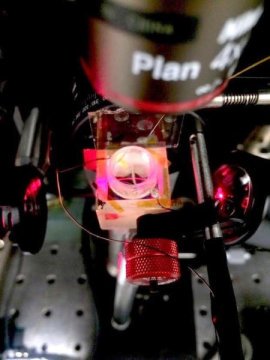The potential to visually depict the motion and strength of very faint electronic fields could also support in the development of so-called lab-on-chip equipment that utilize very minute quantities of fluids on a platform similar to microchip to identify disease orsupport in drug development, for instance, or that automate a series of other chemical and biological analysis. The setup could potentially adapt for sensing and trapping particular chemicals, too and for studies of electronics based on light.
Graphene that is composed of a honeycomb classification of carbon atoms is the emphasis of intense R & D because of its spectacular strength, potential to very effectively conduct electricity, high range of chemical stability, the speed at which electrons can shift across its surfaces and other incredible properties. Some of the studies emphasizes on the use of graphene as an element in computer circuits and display screens, in drug – delivery units and in batteries and solar cells.
In the current study, scientists first utilized infrared light produced at the Berkeley Lab’s Advanced Light Source to comprehend the effects of an electronic field on graphene’s absorption of infrared light. In the study, they aimed an infrared laser through a prism to a sleek layer known as waveguide. The waveguide was crafted to accurately match the graphene’s light absorbing properties so that the entire light was absorbed along the layer of graphene in the absence of an electronic field.
Scientists then fired small electronic pulses in a liquid solution above the layer of graphene that very small disrupted the layer of graphene light absorption, enabling some light to escape in a way that carried an accurate signature of the electronic field. Scientists gathered a sequence of pictures of such escaping light in thousands of second intervals, and such images offered a direct visualization of the electronic field’s strength and location along with the surface of graphene.

The novel imaging platform proved sensitive to voltage of a few microvolts. It will make it ultrasensitive to the electronic fields between cells in networks of nerve cells and heart cells that can vary from tens of microvolts to a couple of millivolts. Scientists found that they could pinpoint an electronic field’s location along the sheet of graphene surface down to tens of microns.
In one of the sequence, scientists detailed the position and dissipation, or diminish a local electronic field generated by a ten thousand of a volt pulse over a period of around 240 milliseconds, with sensitivity down to around 100 millionths of a volt. According to Balch, the elegance of the entire system depends on its generality.
Filed Under: News


Questions related to this article?
👉Ask and discuss on EDAboard.com and Electro-Tech-Online.com forums.
Tell Us What You Think!!
You must be logged in to post a comment.